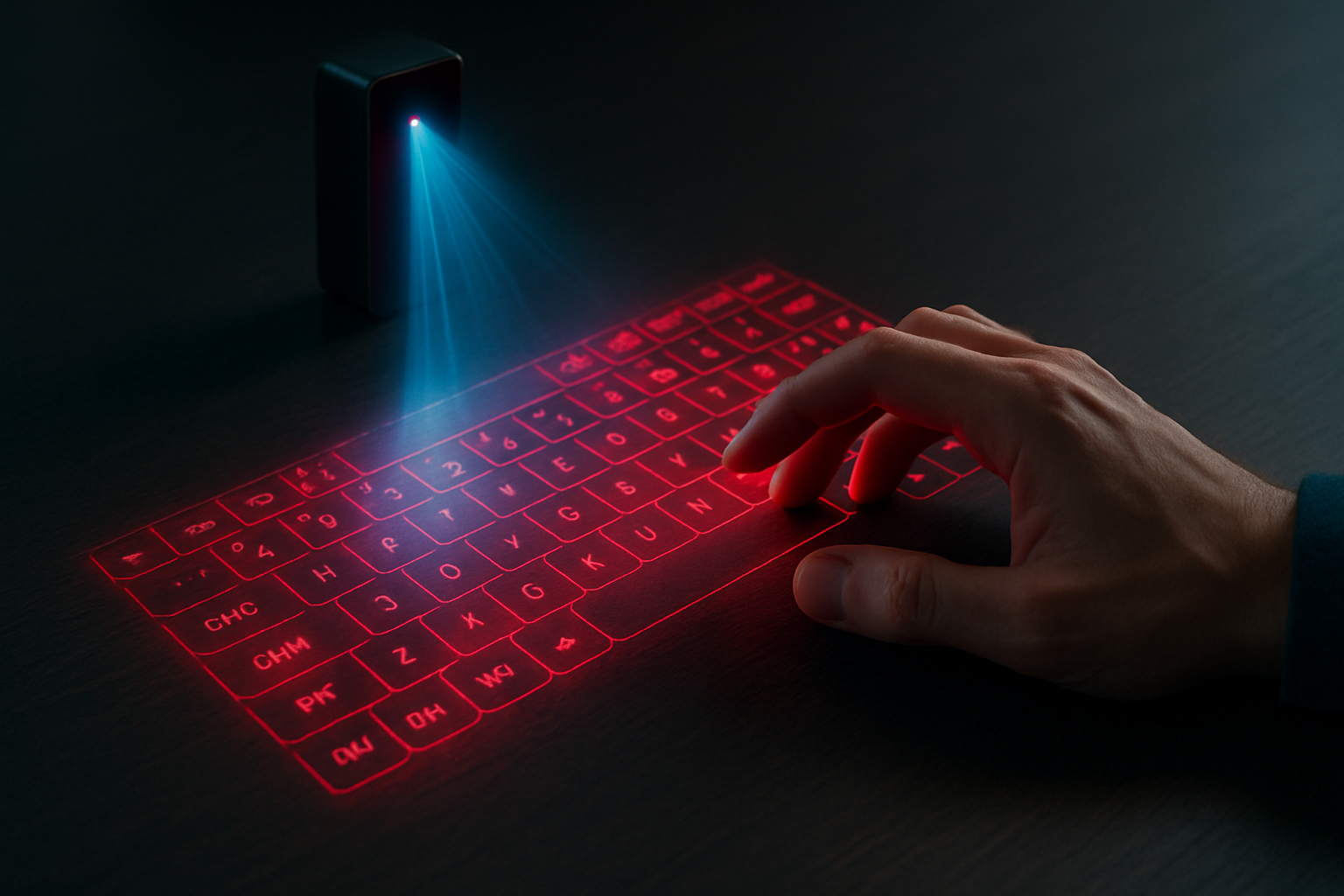Holographic Keyboards: Typing in Thin Air
In the ever-evolving landscape of computer interfaces, a new technology is poised to redefine our interaction with digital devices. Holographic keyboards, once a staple of science fiction, are now emerging as a tangible reality. This cutting-edge input method promises to blend the tactile familiarity of traditional typing with the futuristic allure of projected light, potentially revolutionizing how we communicate with our devices in both personal and professional settings.

The Genesis of Holographic Keyboards
The concept of holographic keyboards isn’t entirely new. It has its roots in the broader field of projected interfaces, which has been in development for over two decades. Early prototypes emerged in the early 2000s, with companies like Canesta and VKB leading the charge. These initial attempts used infrared technology to detect finger movements on a projected keyboard image, but they were plagued by accuracy issues and lack of tactile feedback.
As sensor technology and image processing capabilities advanced, so did the potential for holographic keyboards. By the mid-2010s, improved algorithms and more sensitive cameras allowed for more precise tracking of finger movements, making the technology more viable for practical use.
How Holographic Keyboards Work
At their core, holographic keyboards use a combination of projection technology and motion sensing to create a functional typing surface. A small projector casts the image of a keyboard onto a flat surface, while infrared sensors or depth-sensing cameras track the user’s finger movements.
When a user “presses” a key, the system detects the position and movement of their fingers, translating it into a keystroke. Advanced systems even incorporate haptic feedback, using ultrasound waves to create the sensation of pressing physical keys.
Current State of the Technology
While still not widely available, holographic keyboards have made significant strides in recent years. Companies like Celluon and Serafim have released consumer-grade products that offer a glimpse into the potential of this technology. These devices, often no larger than a smartphone, can project a full-sized QWERTY keyboard onto any flat surface.
However, these current offerings still face challenges. Typing speed and accuracy tend to be lower compared to traditional keyboards, and they struggle in bright lighting conditions. Despite these limitations, they’ve found niche applications in scenarios where portability is paramount, such as field work or mobile presentations.
Potential Applications and Impact
The potential applications of holographic keyboards extend far beyond simple text input. In healthcare, they could provide a sterile input method in operating rooms or laboratories. For travelers, they could eliminate the need to carry bulky peripherals. In public spaces, they could offer a hygienic alternative to shared physical keyboards.
Moreover, the technology opens up new possibilities for interface design. Keyboards could be customized on the fly, changing layout, size, or even language with a simple command. This flexibility could be particularly valuable for users with specific ergonomic needs or for multilingual environments.
Challenges and Limitations
Despite their potential, holographic keyboards face several hurdles before widespread adoption. The lack of physical keys poses a significant challenge for touch typists who rely on tactile feedback. Current technologies also struggle with accuracy, especially for users with larger hands or long nails.
Power consumption is another concern. Projecting a bright, clear image and constantly running motion-tracking sensors can quickly drain a device’s battery. Additionally, the need for a flat, unobstructed surface limits the technology’s use in certain environments.
The Road Ahead
As holographic keyboard technology continues to evolve, we can expect to see improvements in accuracy, responsiveness, and energy efficiency. Research into advanced haptic feedback systems, like those using focused ultrasound waves, could solve the tactile feedback problem.
Integration with augmented reality (AR) systems presents another exciting frontier. Imagine typing on a keyboard that only you can see, floating in mid-air in front of your AR glasses. This could seamlessly blend digital interfaces with the physical world, further blurring the lines between reality and virtual space.
Industry Players and Market Outlook
Several tech giants and startups are investing in holographic interface technology. Apple, for instance, has filed patents related to projected keyboards, hinting at potential future applications in their product ecosystem. Startups like Haptx are pushing the boundaries of haptic feedback, which could be crucial for making holographic keyboards feel more natural.
Market analysts predict significant growth in the holographic display market, with some estimates suggesting it could reach $11.65 billion by 2027. As the technology matures and finds its way into more consumer products, we could see a shift in how we think about computer interfaces.
In conclusion, holographic keyboards represent a fascinating convergence of projection technology, motion sensing, and user interface design. While they’re not yet ready to replace our trusty physical keyboards, they offer a tantalizing glimpse into a future where our interactions with digital devices are more flexible, portable, and integrated into our environment. As the technology continues to evolve, it may well reshape our expectations of what a keyboard can be, pushing us further into a world where the boundaries between physical and digital continue to blur.




